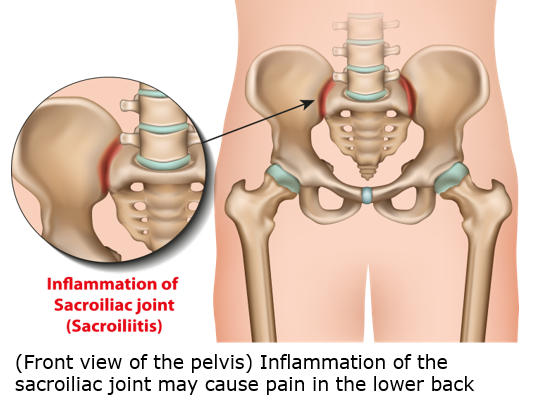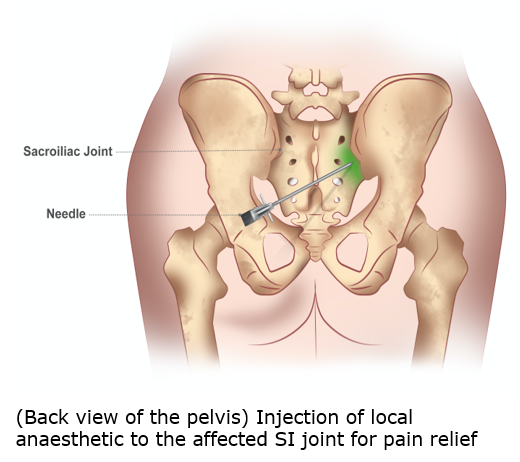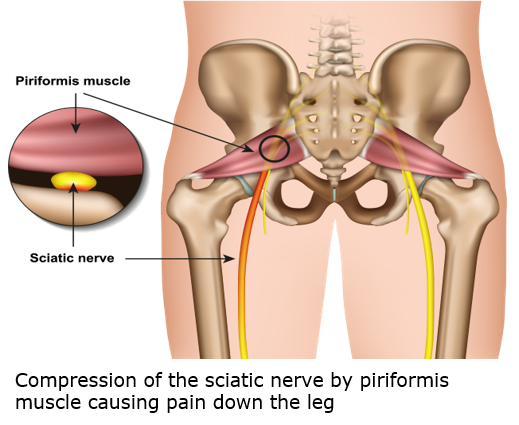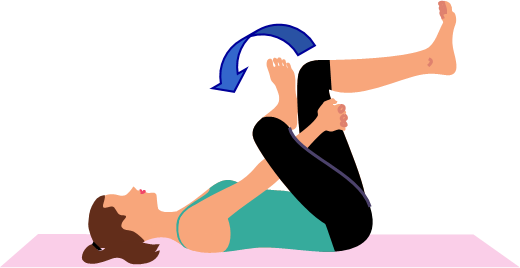What is Sacroiliac Joint Pain?
Sacroiliac (SI) joints are joints located on both sides of the spine and connect the spine to the pelvis. These joints provide a strong support to the weight of the upper body.
Arthritis or inflammation of the SI joints may cause individuals to experience pain in their lower back, buttock and hip.

How Can it be Treated?
Sacroiliac (SI) Joint Injection
Patients experiencing SI joint pain may be advised to go for a SI Joint Injection, where local anaesthetic is injected into the joint to relieve the pain.
Under the guidance of X-ray or ultrasound, a needle will be inserted into the SI joint, where local anaesthetic (with or without steroids) will be injected to reduce inflammation and the pain (refer to image).

Sacroiliac Joint Denervation
In cases where the SI joint injection was effective in managing the pain, SI joint denervation may be performed to offer a longer lasting pain relief. This treatment involves using electrical currents to burn the nerves affecting the affected SI joint for pain relief.
What is Piriformis Muscle Syndrome?
Individuals with SI joint pain often also experience Piriformis Muscle Syndrome, which is a condition caused by the inflammation of the piriformis muscle. This puts pressure on the sciatic nerve, resulting in pain that radiates down the leg.

How Can it be Treated?
Patients with Piriformis Muscle Syndrome may be treated with a simple piriformis injection, where local anaesthetic (with or without steroids) is injected to the piriformis muscle under the guidance of X-ray or ultrasound to reduce the pain.
Piriformis Muscle Stretches
Patients with Piriformis Muscle Syndrome may try the following stretches for temporary pain relief:
- Lie on the floor on your back and cross the left ankle over to the right knee.
- Hold the thigh of your right leg and pull the knee towards you, lifting the foot off the floor.
- Pull the knee closer towards you to increase the stretch.
- Hold each repetition for 10 seconds and complete 10 repetitions each time.
- This stretching exercise can also be done in a sitting position with appropriate back support.

